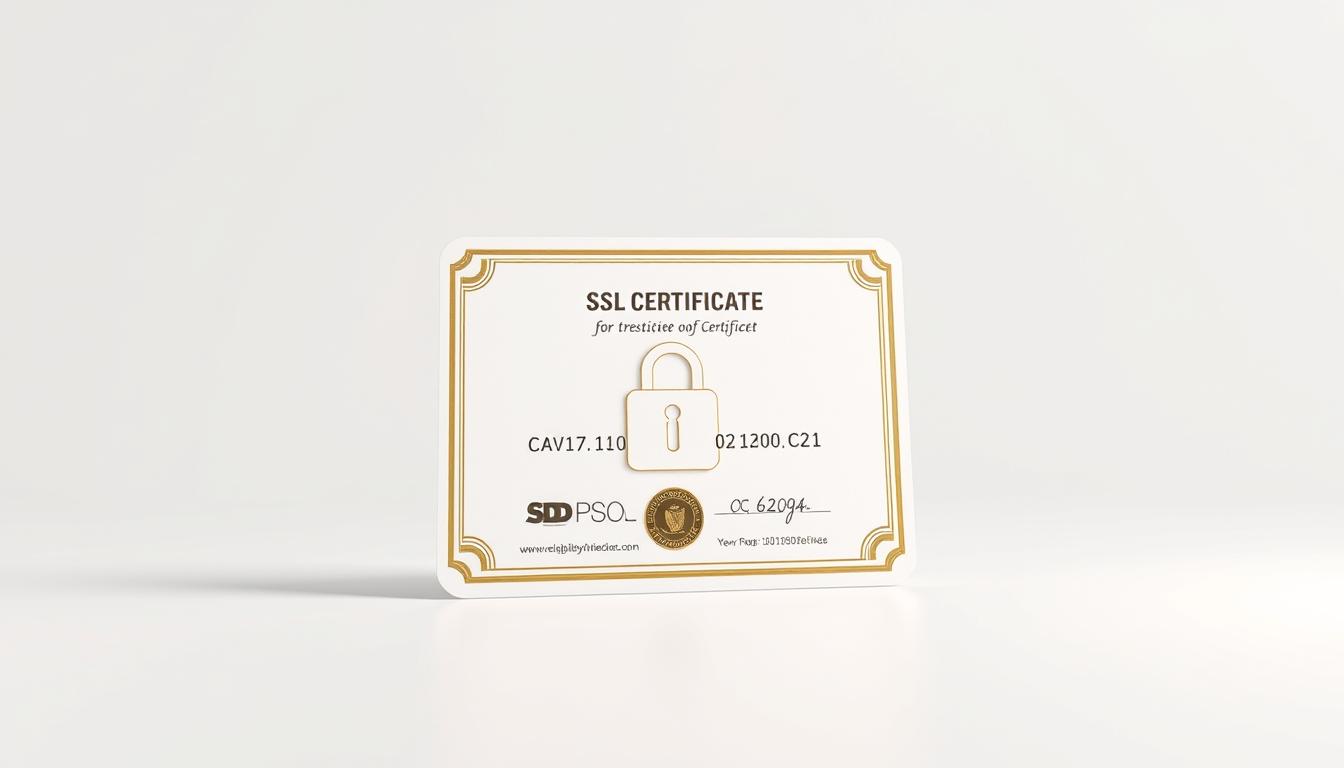Did you know that over 75% of websites now use SSL certificates to secure their online communications? This significant adoption underscores the critical role that digital certificates play in safeguarding the integrity of online interactions.
As you navigate the digital landscape, digital certificates serve as electronic passports that verify the identity and authenticity of websites, users, and devices. They are foundational to establishing trust in online communications and protecting sensitive information from cyber threats.
This comprehensive guide will walk you through the fundamentals of digital certificates, their role in enhancing security, and how solutions like Fortinet’s integrate with these certificates to bolster your organization’s security posture.
Key Takeaways
- Understand the basics of digital certificates and their importance in cybersecurity.
- Learn how digital certificates verify identities and secure online communications.
- Discover how Fortinet’s solutions enhance your organization’s security with digital certificates.
- Explore the role of SSL certificates in protecting sensitive information.
- Gain insights into implementing digital certificates effectively.
Understanding Digital Certificates
To grasp how digital certificates work, it’s essential to understand their fundamental purpose. Digital certificates are crucial in establishing secure communications over the internet. They serve as a digital equivalent of a passport or ID card, verifying the identity of entities such as websites, servers, or individuals.
What is a Digital Certificate?
A digital certificate is an electronic document that uses cryptography to bind a public key to an identity. This identity could be a website, an organization, or an individual. The certificate contains crucial information such as the subject name, issuer name, validity period, and the associated public key. This information is vital for verifying the authenticity of the entity and ensuring secure data exchange.
For instance, when you visit a secure website, your browser checks the website’s digital certificate to ensure it’s genuine and not impersonated by a malicious entity. This check involves verifying the certificate’s information, including the domain name and the issuer’s details.
The Role of Digital Certificates in Cybersecurity
Digital certificates play a pivotal role in cybersecurity by facilitating secure communication over the internet. They are instrumental in establishing an encrypted connection between a client (like a web browser) and a server. This encryption is made possible by the public key contained in the certificate, which is used to encrypt data that can only be decrypted by the corresponding private key.
In the context of cloud environments, digital certificates are essential for securing data in transit. They help in authenticating the identity of cloud services and ensuring that data exchanged between the client and the cloud service remains confidential and tamper-proof.
Key Elements of a Digital Certificate
Every digital certificate contains specific elements that make it unique and verifiable. These elements include the subject name, issuer name, validity period, and the public key. The subject name identifies the entity to whom the certificate is issued, while the issuer name identifies the Certificate Authority (CA) that verified and issued the certificate.
- The validity period defines when the certificate becomes active and when it expires, requiring renewal to maintain continuity of secure communications.
- The public key is fundamental to the encryption process, enabling secure data exchange.
- Understanding these elements is crucial for appreciating how digital certificates contribute to a secure online environment.
How Digital Certificates Work
Digital certificates are the backbone of secure online interactions, but have you ever wondered how they actually work? To understand their significance, it’s crucial to delve into the mechanisms that make them effective. Digital certificates play a vital role in establishing secure connections between your browser and a server, ensuring that data exchanged is encrypted and protected.
The Public Key Infrastructure (PKI) Framework
The Public Key Infrastructure (PKI) is the foundation upon which digital certificates are issued and managed. It provides a framework for creating, managing, and using public-private key pairs and digital certificates. The PKI framework involves various entities, including Certificate Authorities (CAs), Registration Authorities (RAs), and repositories for storing and retrieving certificates and their associated keys.
A critical aspect of PKI is the use of a key pair: a public key for encryption and a private key for decryption. This asymmetric encryption is fundamental to the security provided by digital certificates.
Certificate Authorities (CAs) and Their Role
Certificate Authorities (CAs) are trusted entities that issue digital certificates after verifying the identity of the applicant. They play a pivotal role in the PKI ecosystem by ensuring that a certificate is issued to the rightful owner. CAs verify the identity of the entity requesting a certificate, and upon successful verification, they issue a certificate that binds the entity’s identity to its public key.
The role of CAs is critical in establishing trust in online transactions. They are responsible for maintaining the integrity of the certificate issuance process, ensuring that certificates are not misissued.
The Digital Certificate Verification Process
The digital certificate verification process is a series of steps that occur rapidly when you connect to a secure website or service. This process involves checking if the certificate was issued by a trusted CA, whether it’s still valid, and if it hasn’t been revoked. Your system follows the chain of trust from the server certificate up to a trusted root certificate.
To ensure the certificate’s validity, your system checks the certificate against Certificate Revocation Lists (CRLs) or uses the Online Certificate Status Protocol (OCSP). This verification is crucial for maintaining security in cloud environments where certificates authenticate numerous connections every second.
Understanding the SSL/TLS handshake process is also vital. It verifies certificate validity before establishing a secure connection between your browser and a server, ensuring a secure and encrypted communication channel through SSL or TLS.
The verification process is essential for authentication and trust establishment in online interactions. By verifying the identity of entities and ensuring the integrity of their public keys, digital certificates facilitate secure and trusted communications over the internet.
Types of Digital Certificates
The versatility of digital certificates is reflected in their various types, designed to address a range of security challenges. As you navigate the world of online security, understanding these different types is crucial for selecting the right certificate for your needs.
Domain Validated (DV) Certificates
Domain Validated certificates are the most basic type of SSL/TLS certificate. They are issued after verifying that the applicant owns the domain. This validation process typically involves confirming domain ownership through email or DNS changes. DV certificates are quick to obtain and are suitable for simple websites or blogs that require basic encryption.
Key characteristics of DV certificates include:
- Rapid issuance
- Basic validation process
- Suitable for simple websites
Organization Validated (OV) Certificates
Organization Validated certificates offer a higher level of validation compared to DV certificates. In addition to domain ownership, OV certificates verify the identity of the organization requesting the certificate. This includes checking the organization’s name, address, and other details. OV certificates are ideal for businesses that want to demonstrate a higher level of legitimacy to their users.
OV certificates provide:
- Enhanced validation
- Increased trust
- Suitable for businesses
Extended Validation (EV) Certificates
Extended Validation certificates represent the highest level of validation available. They involve a rigorous verification process that checks not only the domain and organization details but also the legal identity of the entity. EV certificates are often used by financial institutions, e-commerce sites, and other organizations that handle sensitive information.
The benefits of EV certificates include:
- Highest level of trust
- Rigorous validation process
- Ideal for sensitive transactions
Other Specialized Certificate Types
Beyond the standard validation levels, there are specialized certificate types designed for specific security needs. For instance, wildcard certificates secure a domain and all its first-level subdomains with a single certificate, simplifying management for complex websites. Multi-domain certificates (also known as Subject Alternative Name or SAN certificates) allow you to secure multiple domains with one certificate, making them ideal for organizations with multiple websites.
Other examples include:
- Code signing certificates that verify the identity of software publishers and ensure that code hasn’t been tampered with since signing.
- Client certificates used for authenticating users and devices.
- Email certificates (S/MIME) for securing email communications.
- IoT device certificates that are becoming increasingly important in cloud-connected environments.
Understanding these different types of digital certificates is essential for choosing the right certificate to meet your specific security requirements. Whether you’re looking for basic encryption or advanced authentication, there’s a digital certificate designed to fit your needs.
SSL/TLS Certificates Explained
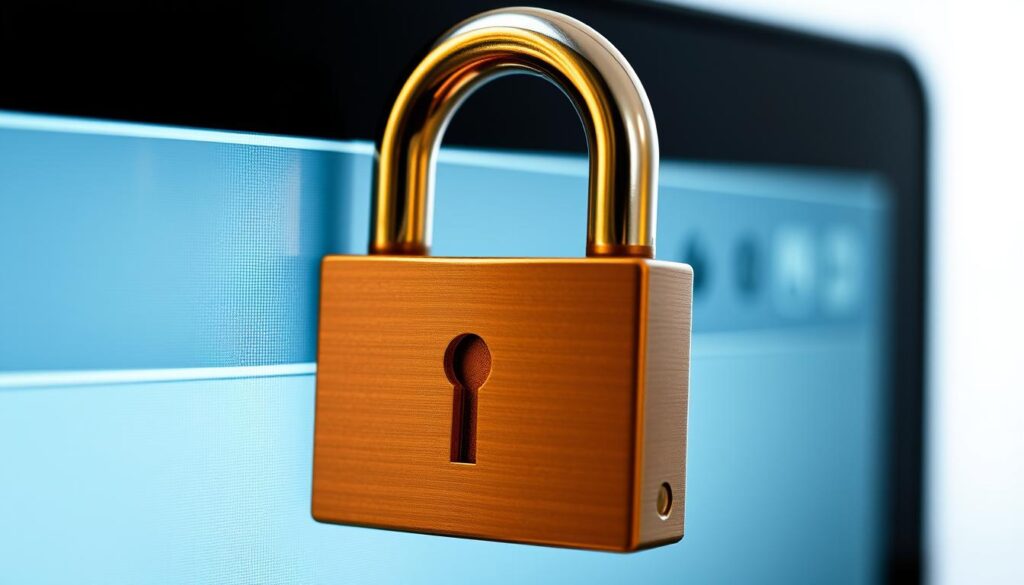
When you visit a secure website, your browser and the website’s server engage in a complex process to ensure that your data remains encrypted and secure. This process is facilitated by SSL/TLS certificates, which are essential for establishing trust and security in online communications.
The Difference Between SSL and TLS Certificates
Although often used interchangeably, SSL and TLS are not exactly the same. SSL (Secure Sockets Layer) is the predecessor to TLS (Transport Layer Security). While SSL has been deprecated due to known vulnerabilities, TLS is its successor and is still widely used today. The term “SSL/TLS certificate” refers to a certificate that can be used with either protocol. In practice, most certificates are used with TLS, but they’re still commonly referred to as SSL certificates.
The main difference between SSL and TLS lies in their cryptographic protocols and the level of security they provide. TLS is more secure and flexible, supporting a wider range of cryptographic algorithms.
How SSL/TLS Certificates Create Secure Connections
SSL/TLS certificates create secure connections by facilitating the encryption of data exchanged between a client (like your browser) and a server. This is achieved through a handshake process that involves the exchange of cryptographic keys.
During the handshake, the server presents its SSL/TLS certificate to the client, allowing the client to verify the server’s identity. This verification process ensures that you’re communicating with the intended server and not an imposter.
The SSL/TLS Handshake Process
The SSL/TLS handshake is a critical process that establishes a secure connection between a client and a server before any data is exchanged. The handshake involves several steps, including the client hello, server hello, certificate presentation, key exchange, and finally, the establishment of secure communication.
Here’s a breakdown of the key steps involved in the SSL/TLS handshake:
- The client initiates the connection by sending a “client hello” message to the server.
- The server responds with a “server hello” message and presents its SSL/TLS certificate.
- The client verifies the server’s identity by checking its certificate.
- The client and server negotiate the encryption algorithms and protocols to be used.
- A session key is generated and used to encrypt the data exchanged between the client and server.
This complex process happens in milliseconds, balancing security with performance to maintain a smooth user experience, especially in cloud environments. The handshake process also includes built-in protections against downgrade attacks, where attackers try to force the use of weaker encryption methods.
Digital Certificate Management Lifecycle
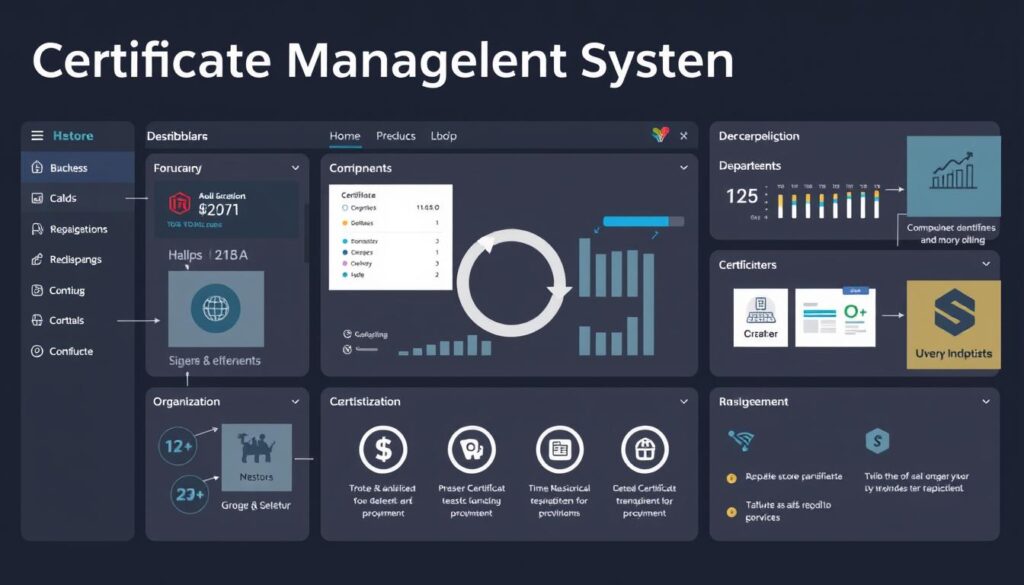
To ensure the security of your digital communications, it’s essential to understand the digital certificate management lifecycle. Effective management of digital certificates is critical for maintaining the trust and security of your online presence. This involves several key processes, from the initial creation and deployment of certificates to their renewal and eventual revocation.
Certificate Discovery and Creation
The first step in the digital certificate management lifecycle is certificate discovery and creation. This involves identifying the need for new certificates, generating certificate signing requests (CSRs), and obtaining certificates from a trusted Certificate Authority (CA). It’s crucial to maintain an inventory of all certificates, including their expiration dates and the CA that issued them.
Certificate discovery is not a one-time task; it requires ongoing effort to ensure that all certificates are accounted for and properly managed. This includes identifying certificates on various devices and applications across your network.
Certificate Storage and Monitoring
Once certificates are obtained, they must be stored securely to prevent unauthorized access. This typically involves storing private keys in a secure location, such as a Hardware Security Module (HSM). Monitoring certificate expiration dates and the health of your certificate infrastructure is also vital to prevent unexpected outages.
Effective certificate monitoring involves tracking the status of certificates and receiving alerts before they expire. This allows you to renew certificates in a timely manner and avoid potential security risks associated with expired certificates.
Certificate Renewal and Revocation
Certificates have a limited lifespan and must be renewed periodically. The renewal process involves generating a new CSR and obtaining a new certificate from the CA. In some cases, certificates may need to be revoked if they are compromised or no longer needed. Revocation involves notifying the CA and ensuring that the certificate is added to a Certificate Revocation List (CRL) or an Online Certificate Status Protocol (OCSP) responder.
Challenges in Certificate Management
Managing digital certificates presents numerous challenges, especially as organizations scale their digital footprint across cloud and on-premises environments. You’ll understand the complexity of managing certificates across diverse platforms, applications, and devices with different requirements and capabilities.
Some of the key challenges include certificate sprawl, where organizations lack centralized management, leading to unknown or forgotten certificates that create security risks. Additionally, certificate-related outages can have significant operational impacts, affecting customer experience, revenue, and reputation.
The security implications of poor certificate management are also significant, including the risks of key compromise, weak cryptographic algorithms, and improper certificate configuration. Managing certificates across multi-cloud environments requires sophisticated tools and processes to maintain visibility and control.
Implementing Digital Certificates in Your Network

Implementing digital certificates in your network is a crucial step towards enhancing your online security. As you prepare to integrate digital certificates into your infrastructure, you need to consider several key factors to ensure a successful implementation.
First, you must assess your certificate needs. This involves determining the types of certificates required for your applications, servers, and services. You should consider factors such as the number of users, the type of data being transmitted, and the level of security required. For instance, if you’re dealing with sensitive customer information, you may need to implement Extended Validation (EV) certificates to provide the highest level of assurance.
Assessing Your Certificate Needs
To accurately assess your certificate needs, you should start by identifying all the systems and applications that require certificates. This includes web servers, VPN servers, and any other services that rely on certificate-based authentication. You should also consider the certificate validation level required for each application, as well as any specific security requirements.
For example, if you’re using a cloud-based service, you may need to obtain certificates from a trusted Certificate Authority (CA) that is recognized by your cloud provider. You should also consider the certificate expiration and renewal process to ensure continuity of your services.
Selecting the Right Certificate Authority
Choosing the right Certificate Authority (CA) is critical to the success of your digital certificate implementation. You should select a CA that is trusted by your clients and provides the necessary level of validation and security. When evaluating CAs, consider factors such as their reputation, the types of certificates they offer, and their revocation and renewal policies.
Some organizations may prefer to use an internal CA for certain applications, while others may rely on public CAs for external-facing services. You should also consider the level of customer support provided by the CA, as well as any additional services they may offer, such as certificate management tools.
Certificate Installation and Configuration
Once you’ve obtained your digital certificates, you need to install and configure them correctly on your servers and applications. This involves generating a Certificate Signing Request (CSR), obtaining the certificate from your CA, and installing it on your server. You should also configure your server to use the correct certificate and ensure that it’s properly chained to the root CA.
Proper configuration is crucial to ensure that your certificates are trusted by clients and that your connections are secure. You should also consider implementing a certificate management system to track and manage your certificates across your organization.
Testing and Validating Certificate Implementation
After installing and configuring your digital certificates, you need to test and validate your implementation to ensure it’s working correctly. This involves verifying that your certificates are correctly installed, that your server is properly configured, and that your clients can establish secure connections.
You can use various tools and techniques to test your certificate implementation, including browser inspections, SSL/TLS scanning tools, and command-line utilities. You should also test certificate revocation checking, OCSP stapling, and other advanced certificate features to ensure they’re working as expected.
By following these steps and carefully planning your digital certificate implementation, you can ensure a secure and reliable connection between your server and clients, protecting your data and maintaining the trust of your users.
Digital Certificates in VPN Authentication
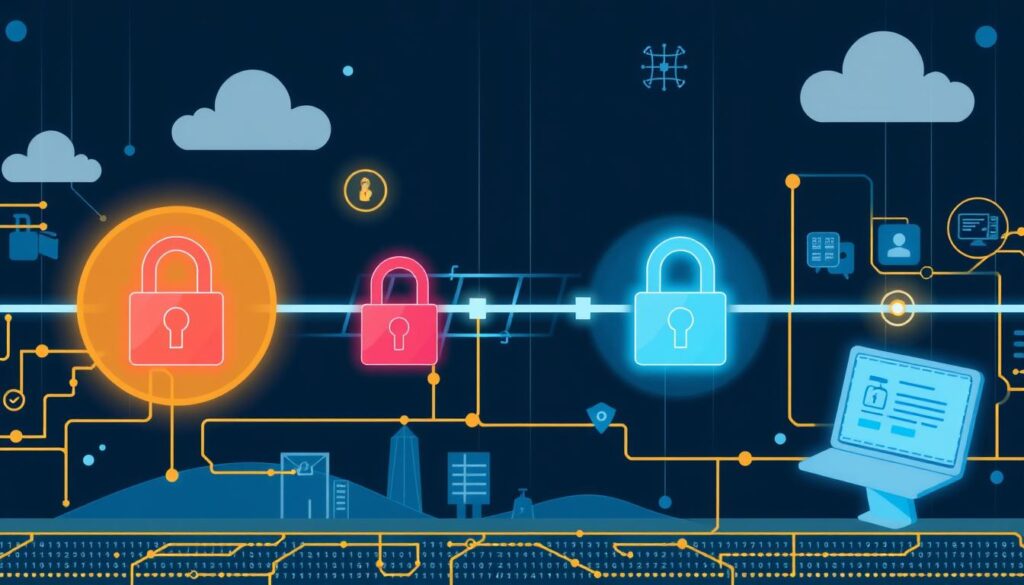
As organizations increasingly rely on VPNs for secure remote access, the role of digital certificates in VPN authentication has become crucial. Digital certificates offer a more secure alternative to traditional authentication methods, enhancing the overall security posture of your VPN infrastructure.
Pre-shared Keys vs. Digital Certificates
When it comes to VPN authentication, two primary methods are used: pre-shared keys (PSKs) and digital certificates. PSKs are simple to implement but have significant security drawbacks, as a compromised key can grant unauthorized access to your VPN. In contrast, digital certificates provide a more secure and scalable solution, as they are based on public key infrastructure (PKI) and can be easily revoked if compromised.
Key benefits of digital certificates over PSKs include:
- Enhanced security through the use of PKI
- Easier revocation in case of a security breach
- Scalability for large and complex VPN environments
Configuring FortiGate for Certificate Authentication
FortiGate firewalls support certificate-based authentication for VPN connections, providing a robust security solution. To configure FortiGate for certificate authentication, you need to:
- Install the necessary certificates on your FortiGate and VPN clients
- Configure the VPN settings to use certificate authentication
- Ensure that your PKI infrastructure is properly set up and managed
For a detailed example, refer to Fortinet’s documentation on site-to-site VPN with digital certificates.
Best Practices for VPN Certificate Security
Implementing best practices for VPN certificate security is crucial to maximize protection while maintaining operational efficiency. This includes:
- Regularly reviewing and updating your certificate lifecycle management processes
- Ensuring secure storage and distribution of certificates and private keys
- Implementing mutual certificate authentication for enhanced security
By following these guidelines, you can significantly enhance the security of your VPN infrastructure and protect against potential threats.
Enterprise Benefits of Using Digital Certificates
In today’s digital landscape, enterprises are turning to digital certificates to bolster their security posture. As organizations expand their online presence, the need to secure communications and verify identities has become paramount. Digital certificates play a crucial role in addressing these needs, offering a range of benefits that enhance overall security and compliance.
Enhanced Data Protection and Encryption
One of the primary benefits of digital certificates is their ability to provide enhanced data protection and encryption. By using a digital certificate, organizations can establish secure connections between their servers and clients, ensuring that sensitive data remains confidential. This is particularly important for businesses that handle sensitive customer information or financial transactions. For instance, SSL/TLS certificates enable encrypted communication, safeguarding data in transit and protecting against eavesdropping and tampering.
Improved User Authentication and Trust
Digital certificates also facilitate improved user authentication and trust. By verifying the identity of entities (such as websites or individuals), digital certificates help to establish trust in online interactions. This is crucial in today’s digital age, where phishing and identity theft are prevalent. Extended Validation (EV) certificates, for example, provide a higher level of verification, displaying the organization’s name in the browser’s address bar and enhancing user trust.
Regulatory Compliance and Industry Standards
Furthermore, digital certificates are essential for meeting regulatory compliance and industry standards. Various regulations, such as PCI DSS for payment processing, HIPAA for healthcare, and GDPR for data protection, mandate the use of secure communication protocols. Digital certificates, particularly SSL/TLS certificates, are a critical component in achieving compliance with these standards. By implementing digital certificates, organizations can demonstrate their commitment to securing communications and verifying identities, thereby simplifying audit processes and maintaining regulatory alignment, even in cloud environments.
In conclusion, the adoption of digital certificates offers enterprises a multitude of benefits, from enhanced data protection and improved user authentication to regulatory compliance. As the digital landscape continues to evolve, the importance of digital certificates in maintaining a secure and trustworthy online presence will only continue to grow.
Limitations and Challenges of Digital Certificates

While digital certificates are a cornerstone of modern cybersecurity, they also present several limitations that organizations must navigate. As you implement digital certificates, it’s crucial to understand the challenges they bring to ensure you’re fully prepared to manage them effectively.
Cost and Resource Considerations
One of the primary limitations of digital certificates is the cost associated with their procurement and management. Organizations need to consider not only the initial cost of obtaining a certificate from a trusted Certificate Authority (CA) but also the ongoing expenses related to renewal, revocation, and management. Additionally, managing digital certificates requires dedicated resources, including personnel with the necessary expertise to handle certificate lifecycle management, which can strain IT budgets and personnel.
To mitigate these costs, organizations should consider implementing efficient certificate management tools and processes. This includes automating certificate renewal and revocation where possible and ensuring that the IT team is adequately trained to handle certificate-related tasks.
Performance Impact on Systems
The implementation of digital certificates can also have a performance impact on systems, particularly during the SSL/TLS handshake process. This process, while essential for establishing secure connections, can introduce latency and consume system resources. However, with modern hardware and optimized configurations, this impact is often minimal. Organizations should monitor their systems to understand the specific performance implications and adjust their configurations accordingly.
Security Vulnerabilities and Mitigation Strategies
Despite their security benefits, certificate systems themselves can contain vulnerabilities that organizations must understand and address. Historical vulnerabilities such as Heartbleed, POODLE, and ROBOT have exposed weaknesses in implementation, highlighting the need for robust security practices. Compromised Certificate Authorities, as seen in incidents like DigiNotar and Comodo breaches, can undermine the entire trust model. Moreover, poor private key management poses significant risks, including unauthorized access if private keys are not kept secure.
To mitigate these risks, organizations should implement comprehensive security strategies. This includes regular security updates, proper configuration of certificate-related settings, certificate transparency monitoring, and certificate pinning. When managing certificates in cloud environments, understanding the shared responsibility model and clear security boundaries is crucial.
By being aware of these limitations and challenges, you can better navigate the complexities of digital certificate management and ensure a more secure and efficient implementation.
Fortinet’s Approach to Digital Certificate Management
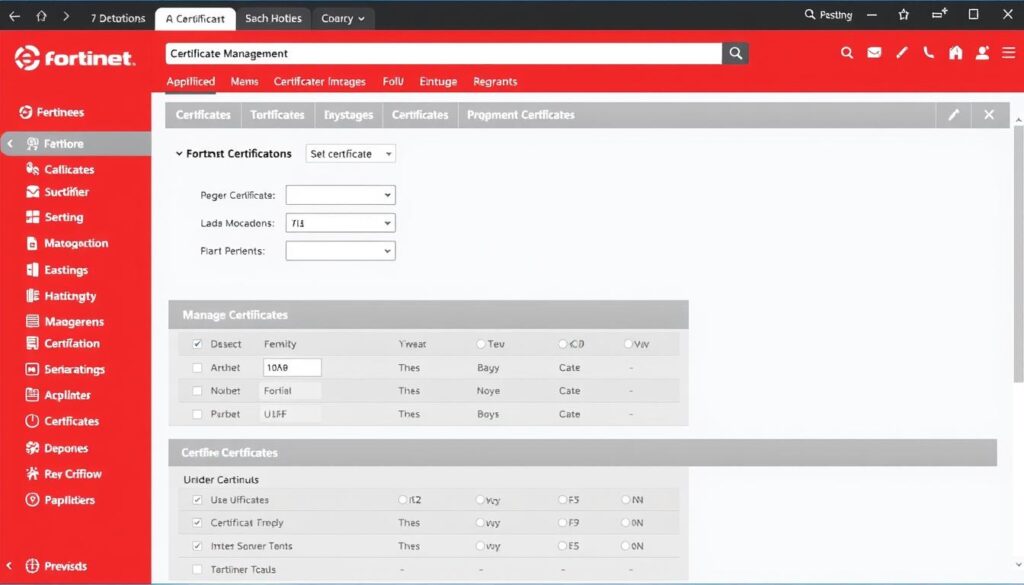
Fortinet’s digital certificate management capabilities are designed to simplify and strengthen your organization’s security posture. By integrating certificate management with FortiGate security infrastructure, Fortinet creates a cohesive security ecosystem that streamlines certificate deployment, renewal, and validation.
Certificate Management Tools
Fortinet offers robust certificate management tools that enable you to efficiently manage digital certificates across your organization. These tools simplify the process of certificate discovery, creation, and renewal, reducing the administrative burden on your IT team.
The certificate management tools are designed to work seamlessly with FortiGate devices, allowing for centralized management of certificates across your network. This integration ensures that certificates are properly configured and validated, enhancing the overall security of your infrastructure.
Integration with FortiGate Security Infrastructure
Fortinet’s certificate management capabilities are tightly integrated with FortiGate security infrastructure, creating a unified security framework. This integration enables FortiGate devices to function as both certificate consumers and enforcers, validating certificates during connections and ensuring compliance with certificate policies.
The integration simplifies certificate deployment and renewal across distributed FortiGate devices, reducing management complexity. It also enhances FortiGate’s zero-trust capabilities by enabling strong authentication for users, devices, and applications through certificate-based security.
Furthermore, the integration extends to cloud environments, where FortiGate virtual appliances maintain consistent certificate-based security policies across hybrid infrastructures. This ensures that your organization’s security posture remains robust and consistent, regardless of the deployment environment.
How to Verify a Website’s Digital Certificate
When browsing the internet, it’s essential to know how to check a website’s digital certificate. Verifying a website’s digital certificate is crucial for ensuring that your connection to the site is secure and that the site is genuine.
Browser-Based Certificate Verification
Most modern web browsers provide an easy way to verify a website’s digital certificate. You can typically do this by clicking on the padlock icon in the address bar. This action will display information about the SSL certificate, including the issuing authority and the domain it was issued for. It’s a good practice to check this information regularly, especially when visiting sites that handle sensitive information.
Warning Signs of Invalid or Compromised Certificates
Your browser will alert you if it detects any issues with a website’s digital certificate. Common warning signs include an open padlock, a red padlock, a line drawn through the site address, or a warning triangle over the padlock. These indicators signify that the site is not secured by SSL or that there’s a problem with the certificate. Some common browser warnings include “Your connection is not private,” “Certificate error,” and “Security certificate problems” messages.
- Recognizing these warning signs helps you avoid potential security risks while browsing.
- Understanding the causes of certificate warnings, such as expiration, domain mismatch, untrusted issuers, and revoked certificates, is crucial.
- You should be able to distinguish between minor issues and serious problems that indicate potential security threats.
Being aware of these signs and understanding their implications can significantly enhance your online security, whether you’re accessing traditional websites or cloud-based applications.
Conclusion
Digital certificates are the backbone of trust in the digital age, and their proper management is essential for secure online interactions. You’ve learned how these certificates work within the Public Key Infrastructure (PKI) to verify identities and enable encrypted communications that protect sensitive data.
The various types of certificates, from domain validated to extended validation, offer different levels of identity assurance to meet diverse security needs. As you implement certificates in your own environment, remember that they’re not just technical tools but trust enablers that protect your organization’s data, reputation, and relationships.
Effective certificate management presents both challenges and opportunities, requiring systematic approaches to discovery, monitoring, renewal, and revocation. Whether you’re securing websites with SSL/TLS certificates, implementing certificate-based VPN authentication, or exploring cloud certificate management, the principles of strong identity verification and encryption remain consistent.
By understanding both the capabilities and limitations of digital certificates, you can leverage them effectively as part of a comprehensive security strategy that addresses today’s complex threat landscape. Fortinet’s integrated approach to certificate management helps organizations maintain security while reducing the operational burden of certificate lifecycle management.
FAQ
What is the purpose of a digital certificate in cybersecurity?
A digital certificate serves as a digital identity for your organization or device, verifying its identity and establishing trust with others. It ensures secure communication by encrypting data exchanged between your system and others.
How do I know if my SSL/TLS certificate is valid?
You can verify your SSL/TLS certificate’s validity by checking its expiration date, ensuring it is issued by a trusted Certificate Authority (CA), and confirming it matches your domain name. You can also use online tools to test your certificate.
What is the difference between Domain Validated (DV) and Extended Validation (EV) certificates?
DV certificates verify domain ownership, while EV certificates provide a higher level of validation, including verification of your organization’s identity and physical presence. EV certificates display your organization’s name in the browser’s address bar.
Can I use the same digital certificate for multiple servers or devices?
It depends on the type of certificate and its configuration. Some certificates, like wildcard certificates, can be used across multiple subdomains or servers. However, it’s generally recommended to use separate certificates for each server or device to minimize the impact of a potential security breach.
How often should I renew my digital certificate?
Digital certificates typically have a validity period, ranging from a few months to several years. You should renew your certificate before it expires to avoid any disruptions to your secure connections. The renewal period varies depending on the certificate type and CA.
What are the consequences of not renewing my digital certificate on time?
Failing to renew your digital certificate can lead to security warnings in browsers, loss of trust with your users, and potential security vulnerabilities. It’s essential to monitor your certificate’s expiration date and renew it promptly to maintain secure connections.
Can Fortinet’s security infrastructure integrate with my existing digital certificate management system?
Yes, Fortinet’s security infrastructure is designed to integrate with various digital certificate management systems, providing a seamless and secure experience. Fortinet’s products, such as FortiGate, support integration with multiple CAs and certificate management tools.
How can I ensure the security of my VPN connection using digital certificates?
To secure your VPN connection, use a trusted CA to issue certificates, implement a robust certificate management system, and configure your FortiGate device to use certificate-based authentication. Regularly monitor and update your certificates to prevent security vulnerabilities.
